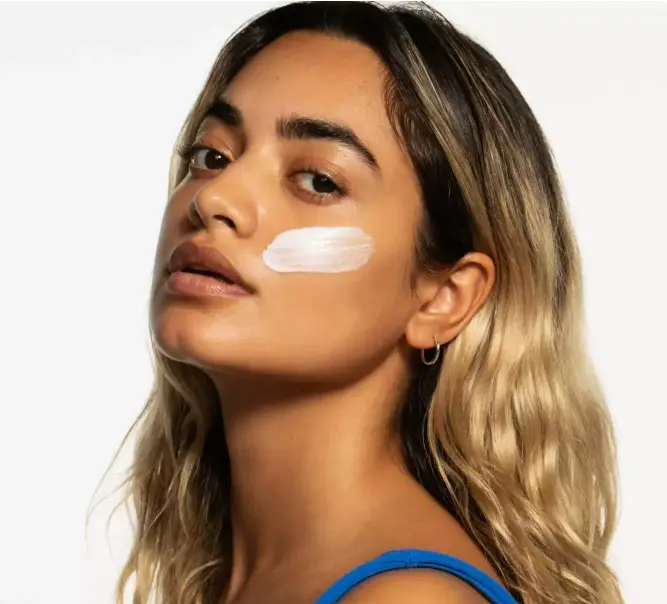The monsoon season can feel refreshing after scorching summer days—but for those with oily or acne-prone skin, it often brings a fresh wave of skincare struggles. With constant humidity in the air, your skin tends to produce more oil, pores get clogged faster, and breakouts become a regular visitor. Add to that the unpredictable weather and pollution, and your skin is under a lot of pressure.
The good news? You don’t need a 10-step routine to tackle it. With just a few smart swaps and calming ingredients, you can keep your skin calm, balanced, and breakout-free through the rainy months.
Here’s a no-fuss guide to handling monsoon breakouts without overwhelming your skin.
1. Cleanse Without Stripping Your Skin
During monsoon, your skin collects more grime than usual—thanks to sweat, excess oil, and environmental pollutants. This makes cleansing the most important step in your routine.
Use a gentle, sulfate-free cleanser that removes dirt and oil while maintaining your skin’s natural moisture barrier. Over-cleansing or using harsh scrubs can irritate your skin and trigger more oil production, making things worse.
Stick to a twice-a-day cleanse—once in the morning and once before bed—to keep your skin clean without overdoing it.
2. Hydrate, Even If Your Skin Is Oily
One of the biggest skincare myths is that oily skin doesn’t need hydration. In reality, if your skin is dehydrated, it will produce more oil to compensate. So the solution isn’t to skip moisturizers—it’s to find the right kind.
Enter the cica moisturizer. Cica, short for Centella Asiatica, is a calming plant-based ingredient that’s great for irritated, acne-prone skin. It soothes inflammation, helps repair the skin barrier, and reduces redness. Perfect for skin that’s stressed from excess oil, bacteria, or environmental changes.
Opt for a lightweight, non-comedogenic formula that won’t clog your pores. A gel or water-based cica moisturizer gives your skin exactly what it needs—hydration and comfort—without the heaviness.
3. Use Sunscreen Daily (Yes, Even When It’s Raining)
Think you don’t need SPF because it’s cloudy? Think again. Up to 80% of UV rays can still reach your skin on overcast days. Without protection, your skin is prone to tanning, pigmentation, and long-term sun damage—even during monsoon.
A good sunscreen for oily skin is essential. Look for one that’s broad-spectrum (protects against both UVA and UVB), lightweight, and oil-free. Gel-based formulas are ideal because they absorb quickly and don’t leave behind a sticky or greasy feel.
Make it part of your morning routine, even if you’re indoors most of the day. Apply it as the last step in your skincare routine and reapply if you’re stepping out or sweating excessively.
4. Don’t Overcomplicate With Too Many Actives
While skincare actives like AHAs, BHAs, and retinol have their benefits, monsoon isn’t always the best time to experiment—especially if your skin is already breaking out or feeling irritated.
Too many actives can compromise your skin barrier and make your breakouts worse. Stick to a minimalist routine. Focus on calming and strengthening your skin instead of constantly trying to treat it.
Pair your gentle cleanser with a cica moisturizer to support skin recovery, and top it off with a sunscreen for oily skin to shield it from external aggressors. You’ll be surprised how much of a difference just these two essentials can make.
If you do use exfoliating products, limit them to 2–3 times a week and avoid layering multiple actives on the same day.
5. Adjust Your Diet for Clearer Skin
What you eat during monsoon affects your skin more than you might think. The cravings for fried snacks and spicy chaats are strong, but these can often lead to inflammation, excess oil, and breakouts.
Try incorporating more:
- Seasonal fruits like papaya, jamun, and pomegranate
- Hydrating foods like cucumbers, tomatoes, and coconut water
- Gut-friendly options like yogurt, buttermilk, and fiber-rich vegetables
A healthy, well-hydrated body often leads to balanced, less reactive skin.
6. Keep Your Environment (and Tools) Clean
Humidity doesn’t just affect your skin—it also encourages the growth of bacteria and fungi on surfaces, towels, and makeup tools.
Make sure you:
- Wash your makeup brushes and sponges regularly
- Change pillowcases at least once a week
- Avoid touching your face with unwashed hands
- Store skincare products in a cool, dry place
These small hygiene habits can prevent unwanted skin flare-ups.
Final Thoughts
Rain and humidity may bring fresh challenges, but they don’t have to wreak havoc on your skin. With just a few simple changes—like using a cica moisturizer to calm and hydrate your skin, and applying a sunscreen for oily skin every day—you can create a routine that keeps your complexion balanced, calm, and protected.
You don’t need a shelf full of products—just a few thoughtful choices that work with your skin, not against it.
This monsoon, let the rain fall freely—your skin’s got it covered.
Also Read-How to Choose the Best Serum for Pigmentation to Brighten Your Skin?
